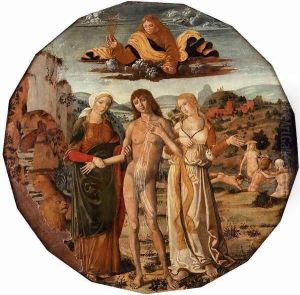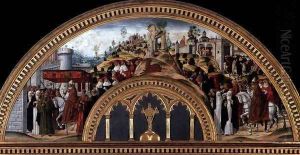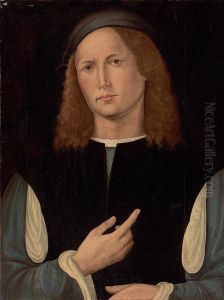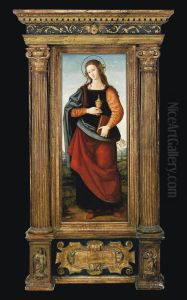Girolamo Di Benvenuto Paintings
Girolamo di Benvenuto was an Italian painter of the Renaissance period, born in Siena in 1470. He was the son of the famous Sienese painter Benvenuto di Giovanni, from whom he initially learned the craft. The artistic environment of his family played a significant role in shaping his career, and he was highly influenced by his father's style, as well as the broader Sienese tradition that was characterized by its continuation of Gothic elements well into the Renaissance.
Girolamo's work often reflected the transition from the late Gothic style to the Renaissance manner. His art was marked by the use of vivid colors, delicate decorative patterns, and a preference for graceful figures and serene compositions. He was also influenced by the works of other Sienese artists like Bernardino Fungai and Matteo di Giovanni, and he incorporated elements from the Florentine Renaissance, particularly the innovations brought about by artists such as Leonardo da Vinci and Michelangelo.
During his career, Girolamo received numerous commissions for altarpieces, frescoes, and other religious works. He was also active in the decoration of civic buildings and private dwellings. One of his most notable works is the 'Madonna and Child with Saints' (also known as 'Madonna of the Snow'), which exhibits his refined approach to composition and his ability to imbue his figures with a sense of grace and nobility.
Girolamo's works can be found in various churches and museums, predominantly in Siena and its surrounding regions. Despite not achieving the same level of fame as some of his contemporaries, his contribution to the Sienese school of painting was significant, helping to sustain its distinctive style during a period of considerable change in the Italian art world.
Girolamo di Benvenuto continued painting until his death in 1524. His legacy includes not only his own works but also the influence he exerted on the generation of artists that followed, who looked to his paintings as examples of the rich Sienese tradition.



